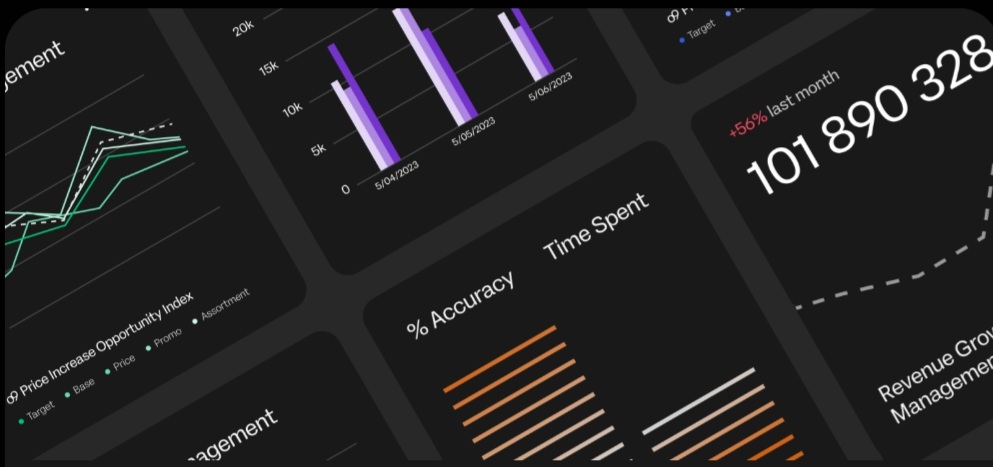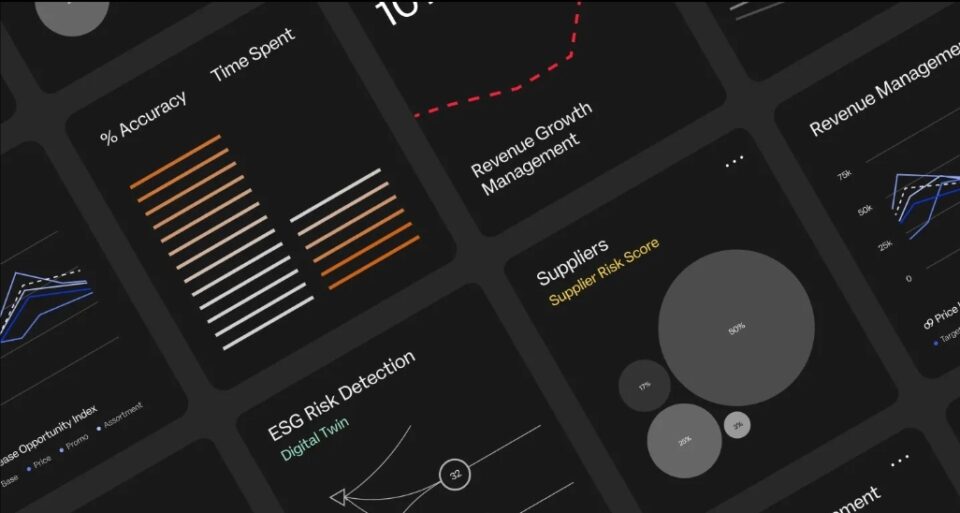o9 Digital Brain™: Overcoming CX and EX Challenges with AI-Driven Planning
In today’s business landscape, customers expect seamless experiences at every touchpoint. Likewise, employees demand efficient tools and clear processes. Yet many organizations struggle to meet these evolving expectations. When data sits in silos, communication breaks down and teams lose sight of collective goals. This gap undermines customer satisfaction and employee engagement alike.
Fortunately, advanced AI platforms can bridge these divides. Leading companies now harness intelligent planning to sync functions, anticipate risks and accelerate value. One such platform, the o9 Digital Brain™, earned “Customers’ Choice” recognition in the 2025 Gartner® Peer Insights™ Voice of the Customer report for Supply Chain Planning Solutions. This distinction reflects high ratings across product capabilities, deployment, support and sales. An impressive 94% of clients recommend the platform for enterprise planning and execution, highlighting its impact on both customer and employee experiences.
This article explores real-world CX and EX pain points, examines how AI-driven decision platforms like the o9 Digital Brain™ address them, and offers actionable strategies for experience leaders.
Real-World CX and EX Pain Points
Siloed Data and Inconsistent Journeys
Organizations often manage customer interactions across separate systems—marketing automation, service desks and billing platforms. This fragmentation forces teams to stitch together incomplete views. As a result, customers repeat information and face inconsistent journeys.
Employees share similar struggles. Supply chain planners may lack visibility into sales forecasts. Finance teams work with outdated numbers. This misalignment breeds frustration and slows execution.
Reactive Management and Missed Signals
Without predictive insights, teams react to issues rather than prevent them. A sudden spike in support tickets triggers firefighting. An unplanned inventory shortage disrupts delivery promises. Both scenarios erode trust—customers feel neglected and employees face burnout.
Change Resistance and Poor Adoption
Even when organizations invest in new tools, they often see low user adoption. Complex interfaces and inadequate training lead employees back to spreadsheets. When solutions fail to gain traction, promised benefits never materialize.
Why Integrated, AI-Driven Planning Matters
AI-driven planning platforms deliver a unified source of truth for supply chain, commercial and financial data. They connect cross-functional processes and automate routine tasks. This integration transforms both CX and EX in several ways:
- Proactive Decision-Making: AI models analyze historical patterns and current signals. They forecast demand, detect anomalies and flag risks. Teams can act before issues become crises.
- Real-Time Collaboration: A shared platform fosters transparency. Sales, operations and finance work off the same data. Employees engage in synchronized planning cycles.
- Simplified User Experience: Intuitive dashboards and self-learning agents reduce manual effort. Users embrace the platform and build confidence.
- Holistic Outcome Optimization: By linking decisions across domains, platforms ensure balanced trade-offs—optimizing inventory, service levels and profitability.
o9 Digital Brain™: A Customers’ Choice for Supply Chain Planning
In mid-2025, o9 achieved a major milestone. It became the only vendor named “a Customers’ Choice” in the 2025 Gartner® Peer Insights™ Voice of the Customer report for Supply Chain Planning Solutions. Among 17 recognized providers, o9 stood out by meeting or exceeding market averages for both Overall Experience and User Interest and Adoption.
A review of 54 peer assessments gave o9 an overall rating of 4.8 out of 5. Users praised its capabilities across product, deployment, support and sales experiences. Notably, 94% of respondents said they would recommend the platform to peers.
What Clients Are Saying
An Associate Director in telecommunications highlighted o9’s customer focus and domain expertise. He noted the platform’s agile implementation and change-management partnership. A Head of Supply Chain Operations in healthcare called o9 a “must-have” for rapid inventory reduction and service-level improvement. Meanwhile, an Associate Director of Supply Chain Operations in manufacturing lauded o9’s tailored design and execution for complex global networks.
Key Innovations Driving CX and EX Gains
o9 attributes its recognition to continuous enhancements across the core platform. Recent innovations include:
- Specialized AI Agents: These bots automate routine planning tasks. They free staff to focus on strategic initiatives.
- Self-Learning Models: The system refines its predictions over time. Users gain sharper insights into demand shifts and supply risks.
- Post-Game Analysis: Teams can compare planned versus actual outcomes. They identify root causes and refine future plans.
Together, these features help clients shorten time to value, boost user adoption and execute with resilience. They also enhance both customer and employee experiences:
- Customers benefit from on-time delivery and accurate order promises.
- Employees gain confidence and autonomy with intelligent, easy-to-use tools.
Implementing AI-Driven Planning in Your Organization
1. Audit Data Sources and Processes
Start by mapping your current planning landscape. Identify key data sources—ERP, CRM, spreadsheets—and existing workflows. Look for manual handoffs and reporting bottlenecks.
2. Define Experience Objectives
Set clear CX and EX goals. Do you aim to reduce order fulfillment times? Lower downtime for planners? Improve cross-functional collaboration? Align these objectives with broader business targets.
3. Select a Unified Platform
Choose a solution that delivers end-to-end planning across domains. Evaluate vendors on user experience metrics: adoption rates, setup complexity and support quality. Look for peer reviews and customer reference scores.
4. Drive Change Management
Involve stakeholders early. Provide role-based training and user-friendly documentation. Leverage platform champions to guide colleagues. Celebrate early wins to build momentum.
5. Monitor and Refine
Use real-time dashboards to track KPIs. Compare forecast accuracy, recommendation adoption and execution gaps. Apply post-game analysis to uncover improvement opportunities. Iterate on models and workflows to ensure sustained progress.
Case Study: Transforming CX and EX at GlobalTelCo
GlobalTelCo, a multinational telecom operator, faced persistent delivery delays and low planner morale. Orders often shipped late due to poor demand forecasts. Planners tracked thousands of SKUs across multiple regions with manual spreadsheets.
After implementing o9’s Digital Brain™, the company:
- Increased forecast accuracy by 20%.
- Reduced inventory levels by 15%.
- Boosted planner satisfaction scores by 30%.
Real-time alerts signaled potential stockouts. Collaborative workflows allowed supply, sales and finance teams to align on order priorities. Planners regained valuable hours previously spent on manual reconciliation. Customers experienced more consistent delivery, and employees reported less stress.

Expert Commentary
Chakri Gottemukkala, Co-Founder and CEO of o9, notes: “Being the sole provider in the Customers’ Choice quadrant underscores the value our clients achieve. Next-generation AI agents and self-learning models empower teams to build boundaryless operating models. They drive performance excellence in volatile environments.”
This endorsement highlights two critical pillars:
- User-Centric Design: Tools that employees instinctively adopt deliver sustained ROI.
- Agile Intelligence: Continuous learning adapts to changing markets, boosting both CX and EX.
Actionable Insights for CX and EX Leaders
- Prioritize Unified Planning: Break down functional silos. Integrate planning across supply chain, commercial and finance domains.
- Leverage AI Agents: Automate routine workflows. Free teams to innovate on customer and employee experiences.
- Focus on Adoption: Simplify onboarding. Offer training and hands-on support. Track usage metrics and address friction points.
- Embed Post-Game Analysis: Review execution gaps. Share learnings across the organization to foster a culture of continuous improvement.
- Align Metrics: Measure CX and EX gains alongside financial outcomes. Tie customer satisfaction and employee engagement KPIs to planning performance.
Practical Takeaways
- Data silos undermine both customer and employee experiences.
- AI-driven platforms like o9 Digital Brain™ deliver unified planning, proactive insights and simplified user experiences.
- Recognized by users, o9 earned top ratings for overall experience and adoption.
- Real-world clients achieve faster impact, lower costs and higher satisfaction by connecting planning and execution.
- To succeed, leaders must define clear CX/EX objectives, invest in change management and continuously refine workflows.
By adopting an AI-powered planning approach, organizations can elevate every touchpoint. Customers receive accurate promises and seamless service. Employees gain clarity, autonomy and a path to strategic growth. In a world of constant change, these capabilities drive lasting competitive advantage.

